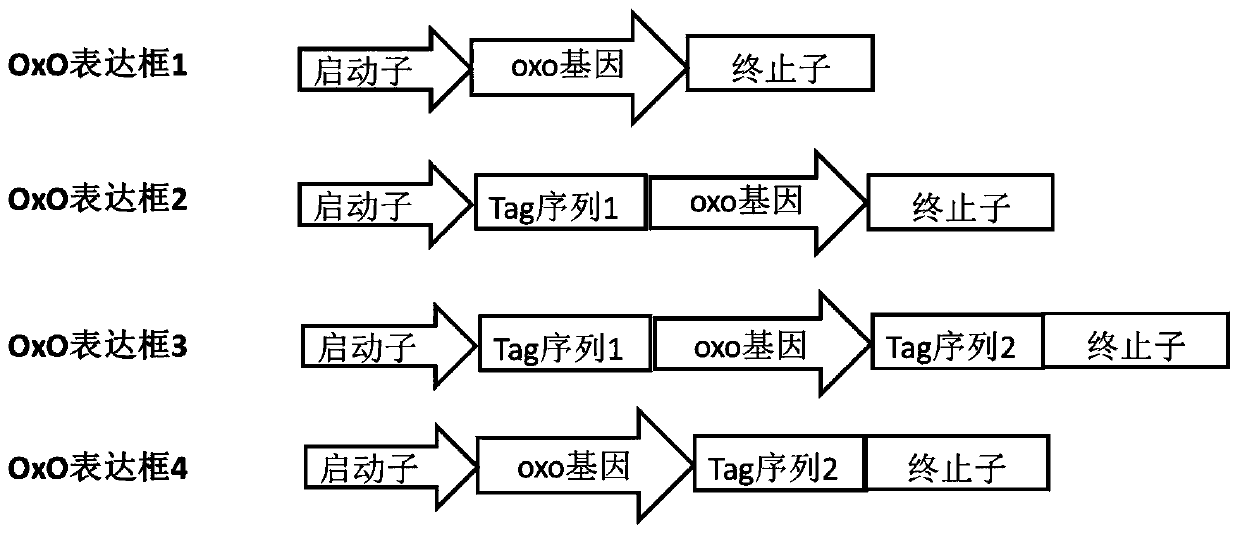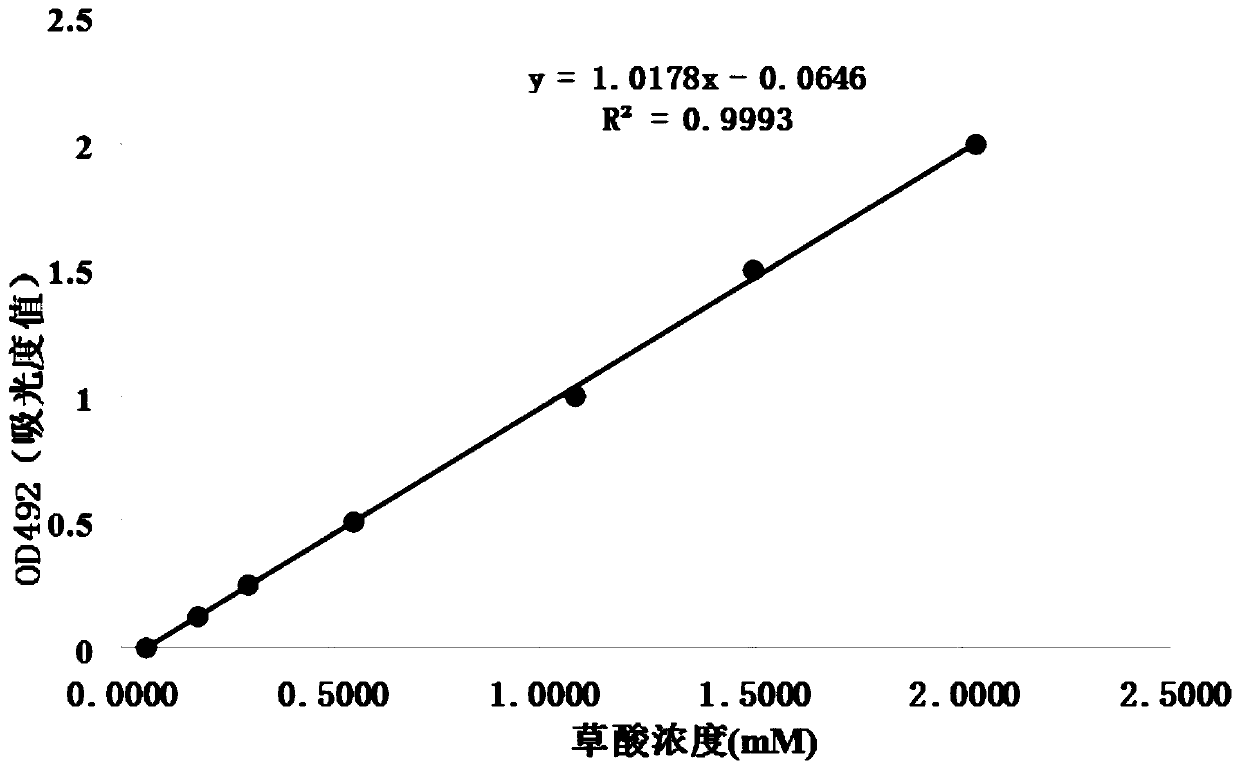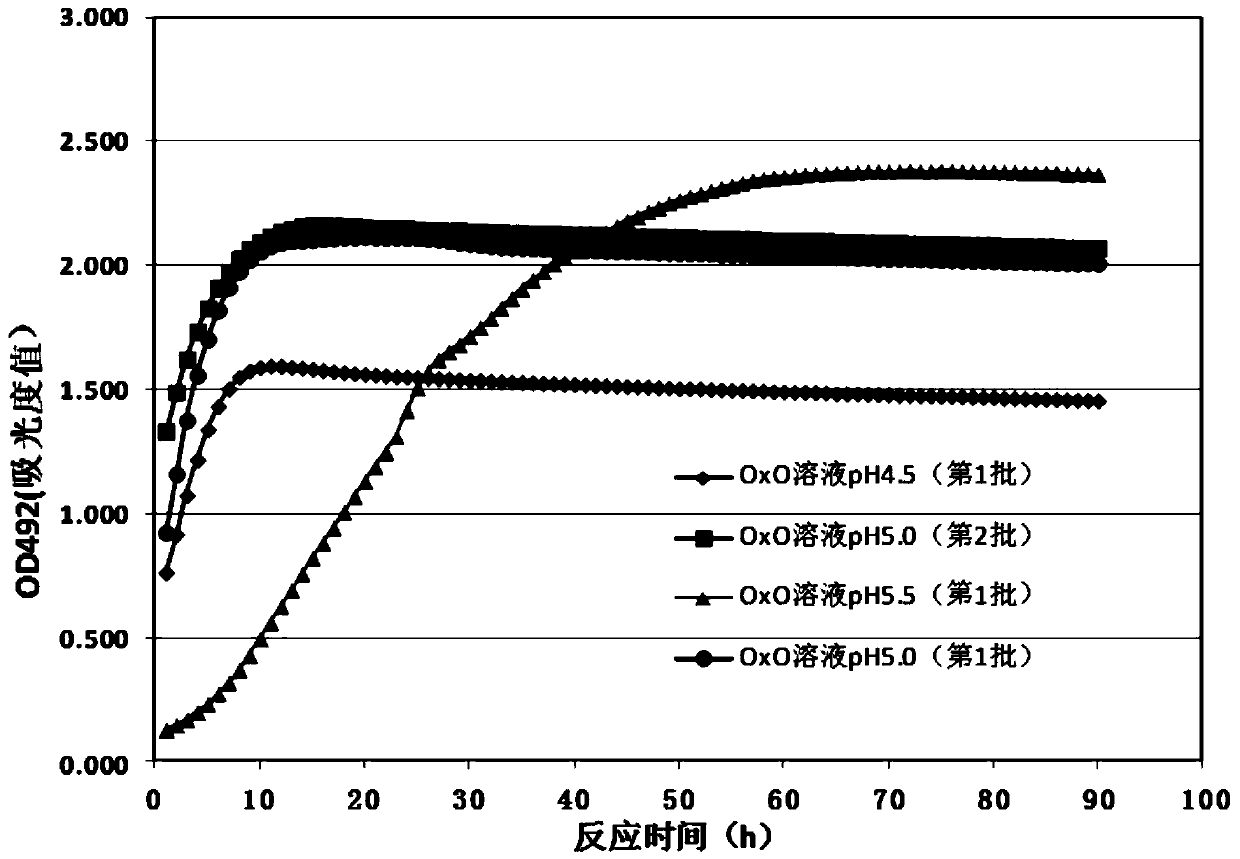A kind of preparation method and application of soluble oxalate oxidase
An oxalate oxidase and soluble technology, applied in biochemical equipment and methods, oxidoreductase, and microbial-based methods, can solve the problems of cumbersome, high-cost, and difficult-to-achieve high-throughput assays for the determination of oxalate decarboxylase activity , to achieve the effect of easy high-throughput measurement, low cost and short time consumption
- Summary
- Abstract
- Description
- Claims
- Application Information
AI Technical Summary
Problems solved by technology
Method used
Image
Examples
Embodiment 1
[0044] Embodiment 1 Obtaining of oxalate oxidase gene (oxo gene)
[0045] The inventors analyzed the suspected oxo gene sequences that have been functionally verified (such as wheat oxo and barley oxo) and have not been experimentally verified in the NCBI database, and screened to obtain genes that can be used for soluble expression of oxalate oxidase in prokaryotic systems. For known oxo genes and suspected oxo gene sequences in the NCBI database, directly synthesize their CDS sequences, construct E. coli expression vectors, and perform expression tests. For the gene with oxalate oxidase activity, further optimize the codon, the codon fitness index (CAI) in the optimized sequence is higher than that of the original sequence and greater than 0.7, there are no rare codons, and the GC content is between 42-58%. No more than 18bp repeat sequence; these genes can be selected from wheat oxo (GeneBank Accession NO.AJ556991), barley oxo (GeneBank Accession NO.Y14203), worm oxo (C.sub...
Embodiment 2
[0046] Embodiment 2 Design of oxo gene expression cassette
[0047] The invention of the present application has been found through extensive research, in order to promote the soluble expression of Escherichia coli, before and after the artificially synthesized oxalate oxidase gene oxo gene (SEQ ID NO. The protein tag for soluble protein expression is inserted into the E. coli expression vector pET-28a to construct a series of E. coli recombinant expression vectors, and then transformed into the E. coli expression host for expression to obtain soluble oxalate oxidase that can be expressed efficiently without inclusion body; wherein, the expression frame of the oxo gene in the recombinant expression vector has four forms, such as figure 1 shown. The promoter in the oxo gene expression cassette is the T7 promoter in the pET-28a vector.
[0048] Insert the gene tag1 of the protein tag that can promote the expression of the target protein between the oxo gene and the E. coli pro...
Embodiment 3
[0050] Example 3 Construction of oxo gene recombinant expression vector
[0051] The inventors of the present invention conducted extensive studies to find a method for efficiently expressing soluble oxalate oxidase. Specifically, using the oxo gene (Mtoxo) derived from Medicago truncatula as a representative of plant-derived oxalate oxidase, a highly efficient production system was constructed. The types of oxo genes derived from plants and microorganisms are not particularly limited, and any oxo genes identified so far can be used in principle.
[0052] (1) Construction of recombinant expression vector pET28-Mtoxo (oxo expression box 1)
[0053]Using the Mtoxo gene (SEQ ID NO.7) synthesized from the whole gene as a template, design a primer pair F1 / R1 to amplify the Mtoxo gene, and perform gel recovery and purification on the amplified product. The method refers to the commercially available DNA mini-purification reagent According to the method described in the box, the DN...
PUM
 Login to View More
Login to View More Abstract
Description
Claims
Application Information
 Login to View More
Login to View More - R&D
- Intellectual Property
- Life Sciences
- Materials
- Tech Scout
- Unparalleled Data Quality
- Higher Quality Content
- 60% Fewer Hallucinations
Browse by: Latest US Patents, China's latest patents, Technical Efficacy Thesaurus, Application Domain, Technology Topic, Popular Technical Reports.
© 2025 PatSnap. All rights reserved.Legal|Privacy policy|Modern Slavery Act Transparency Statement|Sitemap|About US| Contact US: help@patsnap.com



